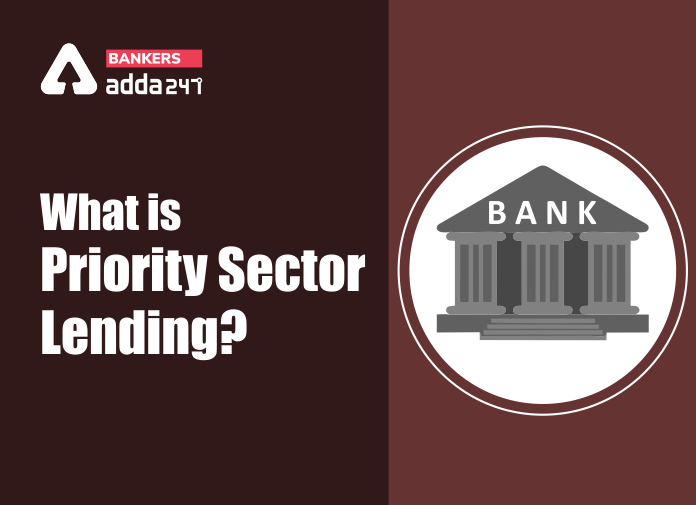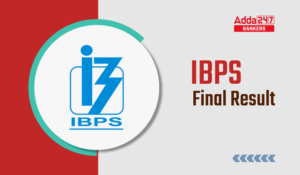Table of Contents
Banking Awareness is an important section and if you are a banking aspirant then you must be knowing it that how much difference can this section bring into your total score. A lot of questions are asked from this topic as well as in some of the exam a separate section is dedicated to this topic in General awareness. It will also be helpful for you in your interview as maximum number of questions are asked from this topic. In this article, we will be discussing about Priority Sector Lending.
Also check,
| What is MCLR? | Bank Cheques: Different Types of Cheques and its features | What Are NBFC And Their Functions |
What Is Priority Sector Lending?
Priority Sectors are those sectors of a nation which requires timely and adequate credit to grow and to prosper. So, this is a mechanism that assures the timely distribution of money in the economy of a country. There is a certain percentage that every bank has to achieve by distributing the loan to these sectors.
There are several priority sectors are recognized by RBI, and certain targets are given to banks according to which banks must provide loans in priority to these sectors.
The interest rate is decided based on the directives issued by the Department of Banking Regulation of RBI, from time to time
Also check,
| Difference between Write-off and Waive Off of loans | Economic Recession Vs. Depression | Banking Awareness: Deflation & Its Causes |
As notified by RBI on on December 28, 2018, given below are categories under priority sector
(i) Agriculture
(ii) Micro, Small and Medium Enterprises
(iii) Export Credit
(iv) Education
(v) Housing
(vi) Social Infrastructure
(vii) Renewable Energy
(viii) Others
Initially when priority sector lending mechanism came into existence there was no specific target fixed in it, It was in November 1974 the banks were advised to raise the share of these sectors. Later on it was agreed that banks should aim at raising the proportion of their advances to priority sector to 40 percent.
Targets and Sub-targets for banks under priority sector
The targets and sub-targets for banks under priority sector are given below:
| Categories | Domestic scheduled commercial banks (excluding Regional Rural Banks and Small Finance Banks) and Foreign banks with 20 branches and above | Foreign banks with less than 20 branches |
| Total Priority Sector |
Out of total ANBC, 40 per cent of Adjusted Net Bank Credit or Credit Equivalent Amount of Off-Balance Sheet Exposure, whichever is higher after calculation will be considered. |
Out of total ANBC 40 per cent of Adjusted Net Bank Credit or Credit Equivalent Amount of Off-Balance Sheet Exposure, whichever is higher after calculation, to be achieved in a phased manner by 2020. |
| Agriculture Sector | Out of total ANBC, 18 per cent of ANBC or Credit Equivalent Amount of Off-Balance Sheet Exposure, whichever is higher after calculation will be considered final.
Within the 18 percent target for agriculture, a target of 8 percent of ANBC or Credit Equivalent Amount of Off-Balance Sheet Exposure, whichever is higher is prescribed for Small and Marginal Farmers. |
It is Not applicable |
| Micro Enterprises Sector | Out of total ANBC, 7.5 percent of ANBC or Credit Equivalent Amount of Off-Balance Sheet Exposure, whichever is higher after calculation will be considered final. | It is Not applicable |
| Advances to Weaker Sections Sector | Out of total ANBC, 10 percent of ANBC or Credit Equivalent Amount of Off-Balance Sheet Exposure, whichever is higher after calculation will be considered final. | It is Not applicable |
| # Domestic banks have been directed by the central bank of India to ensure that their overall direct lending to non-corporate farmers does not fall below the system-wide average of the last three years achievement. | ||
Also Read,
| Banking Awareness: What Is Bancassurance? | Banking Awareness: Deflation & Its Causes | Banking Awareness: Insolvency VS. Bankruptcy | Banking Awareness 2020: Different Types of Bank Loans in India |
Description of the Categories under priority sector:
Agriculture
- As per the RBI, The activities covered under Agriculture are classified under three sub-categories viz. Farm credit, Agriculture infrastructure and Ancillary activities.
- People who are individual farmers [including Self Help Groups (SHGs) or Joint Liability Groups (JLGs), i.e. groups of individual farmers, provided banks maintain disaggregated data on such loans] engaged in Agriculture and services related to it, viz., dairy, fishery, animal husbandry, poultry, bee-keeping and sericulture.
- Loans will be provided to all the corporates, partnership firms and institutions engaged in Agriculture and Allied Activities (dairy, fishery, animal husbandry, poultry, bee-keeping and sericulture).
Micro and small enterprises
As per the RBI, The limits for investments as notified by Ministry of Micro Small and Medium Enterprise are as given below:
| Manufacturing sector | |
| Enterprises | Investment in plant and machinery |
| Micro Enterprises | Credit limit must not exceed twenty five lakh rupees |
| Small Enterprises | More than twenty five lakh rupees credit but does not exceed five crore rupees credit |
| Service Sector | |
| Enterprises | Investment in equipment |
| Micro Enterprises | Must not exceed ten lakh rupees |
| Small Enterprises | More than ten lakh rupees can be given but does it must not exceed two crore rupees |
The sector also includes loans for Food and Agro Processing, Khadi and Village Industries Sector (KVI) sectors to help the people involve in these.
Also Read,
| Banking Awareness: What Is Ways & Means Advances? | Banking Awareness- What is a Debenture? | Banking Awareness: Credit Rating Agencies in India |
Education
Education Loans will be given to individuals for educational purposes including vocational courses upto Rs 10 lakh for studies in India and Rs 20 lakh for studies abroad.
Housing
- Loans will be provided to individuals up to Rs 25 lakh in metropolitan centres with population above ten lakh and Rs 15 lakh in other centres for purchase/construction of a dwelling unit per family excluding loans sanctioned to bank’s own employees.
- Loans will be provided for repairs to the damaged dwelling units of families up to Rs 2 lakh in rural and semi- urban areas and up to Rs 5 lakh in urban and metropolitan areas.
Export Credit
Export Credit which is extended by foreign banks with less than 20 branches will be reckoned for priority sector target achievement.
Others
- Loans, not exceeding Rs 50,000 per borrower provided directly by banks to individuals, provided that the borrower’s household annual income in rural areas does not exceed Rs 60,000 and for non-rural areas it should not exceed Rs 1,20,000, as per RBI.
- Loans to distressed persons will be provided.
- Overdrafts facility of up to Rs 50,000 (per account), granted against ‘no-frills’ / basic banking / savings accounts provided that the borrowers household annual income in rural areas does not exceed `Rs 60,000 and for non-rural areas it should not exceed Rs 1,20,000.
Also Read,
| Banking Awareness: Different Types of Banking | Banking Awareness: What Are NBFC And Their Functions | Bank Cheques: Different Types of Cheques and its features |
Under Weaker Sections Category:
As per the central bank of Inda, Priority sector loans to the following borrowers are eligible to be considered under Weaker Sections category:-
| No. | Category |
| 1. | Small and Marginal Farmers |
| 2. | Artisans, village and cottage industries where individual credit limits do not exceed ₹ 0.1 million |
| 3. | Beneficiaries under Government Sponsored Schemes such as National Rural Livelihoods Mission (NRLM), National Urban Livelihood Mission (NULM) and Self Employment Scheme for Rehabilitation of Manual Scavengers (SRMS) |
| 4. | Scheduled Castes and Scheduled Tribes |
| 5. | Beneficiaries of Differential Rate of Interest (DRI) scheme |
| 6. | Self Help Groups |
| 7. | Distressed farmers indebted to non-institutional lenders |
| 8. | Distressed persons other than farmers, with loan amount not exceeding ₹ 0.1 million per borrower to prepay their debt to non-institutional lenders |
| 9. | Individual women beneficiaries up to ₹ 0.1 million per borrower |
| 10. | Persons with disabilities |
| 11. | Overdraft limit to PMJDY account holder upto ₹ 10,000/- with age limit of 18-65 years. |
| 12. | Minority communities as may be notified by Government of India from time to time |



 IBPS Final Result 2025 Coming Out Tomorr...
IBPS Final Result 2025 Coming Out Tomorr...
 Simple Tips to Avoid Common Mistakes In ...
Simple Tips to Avoid Common Mistakes In ...
 Important Topics & Shortcuts for IDB...
Important Topics & Shortcuts for IDB...


